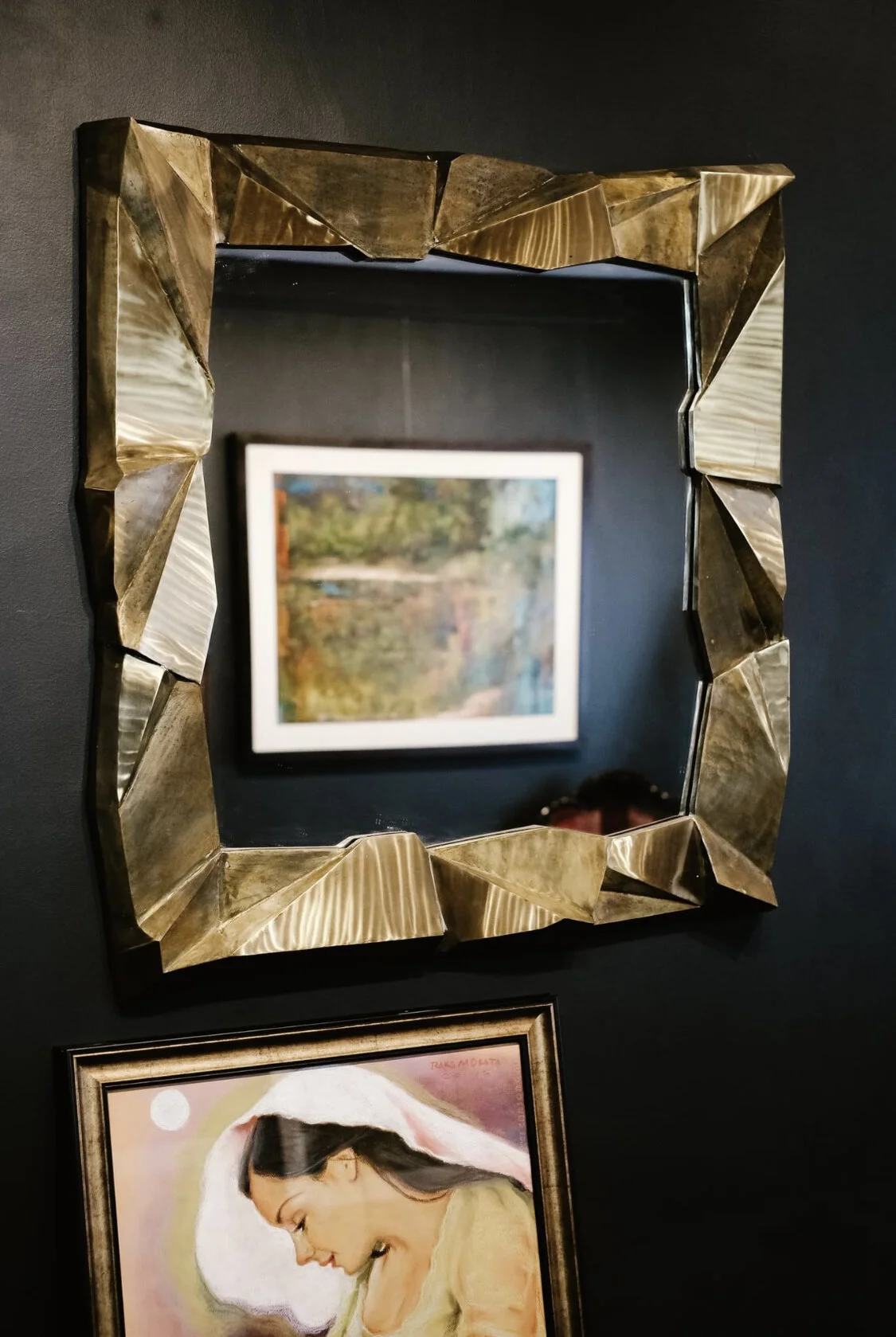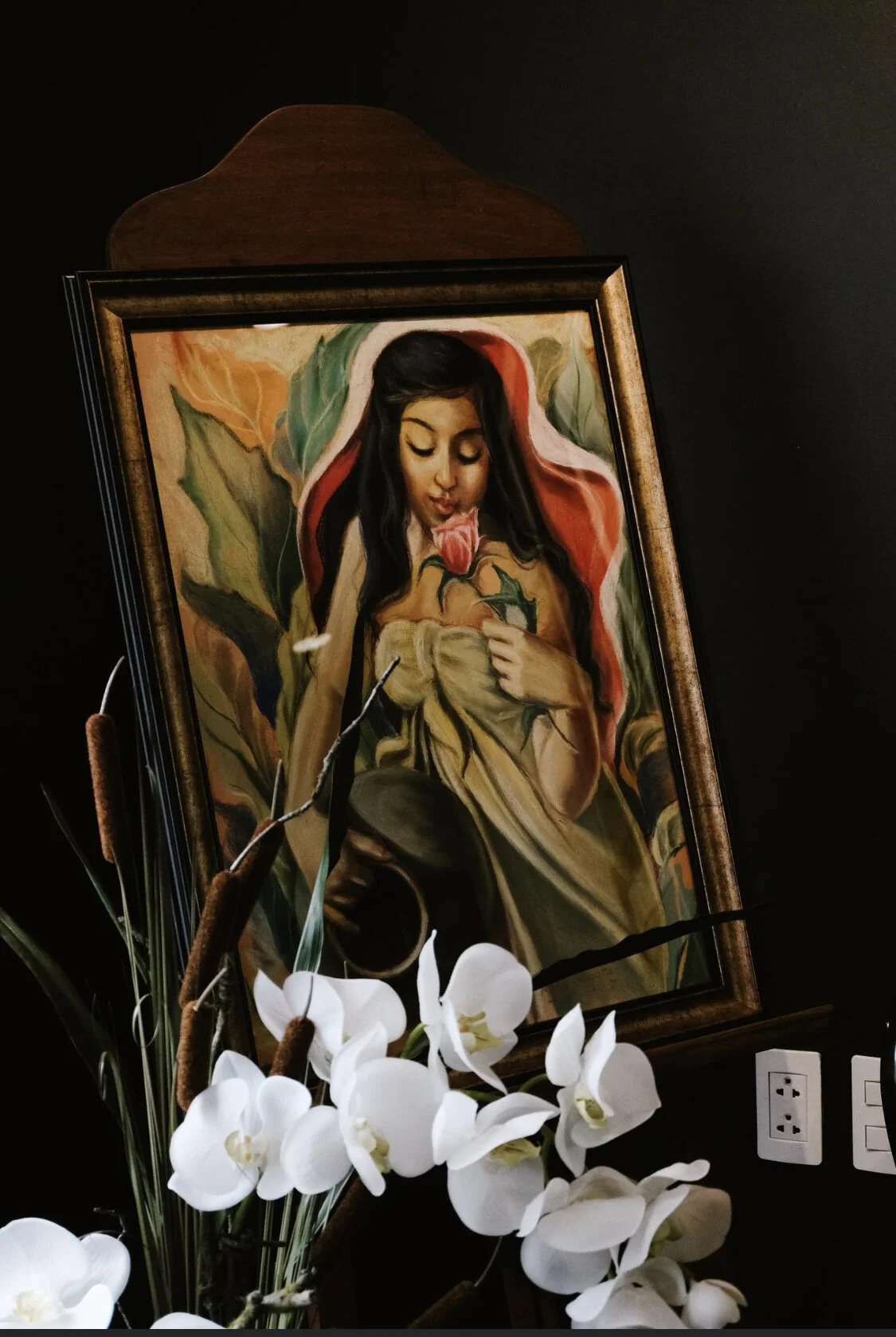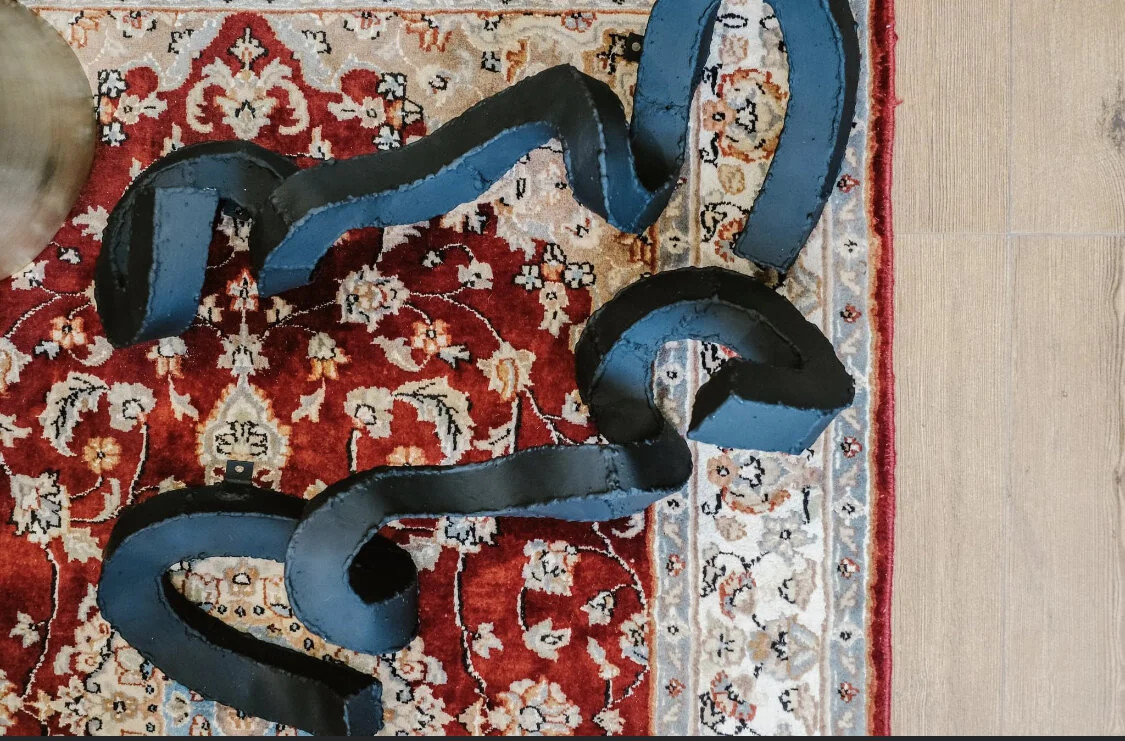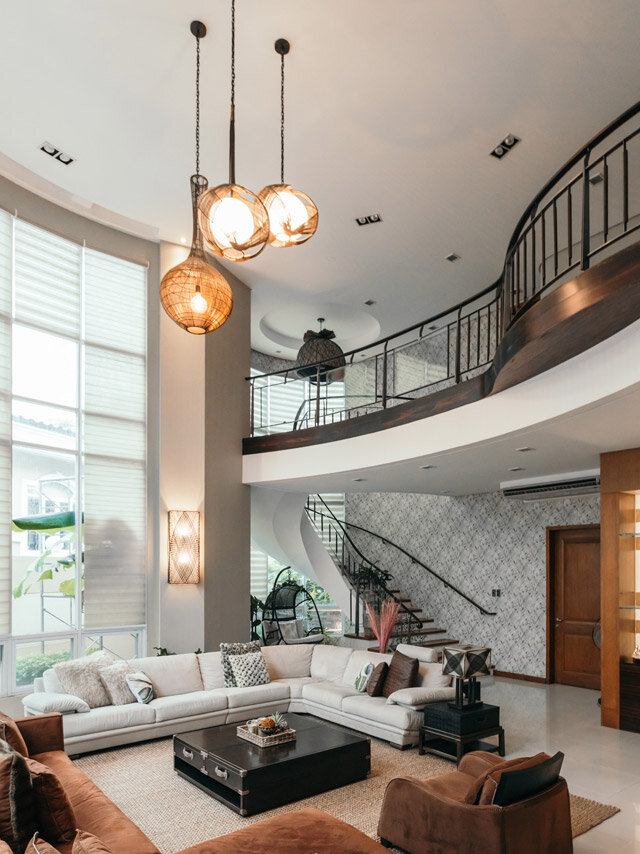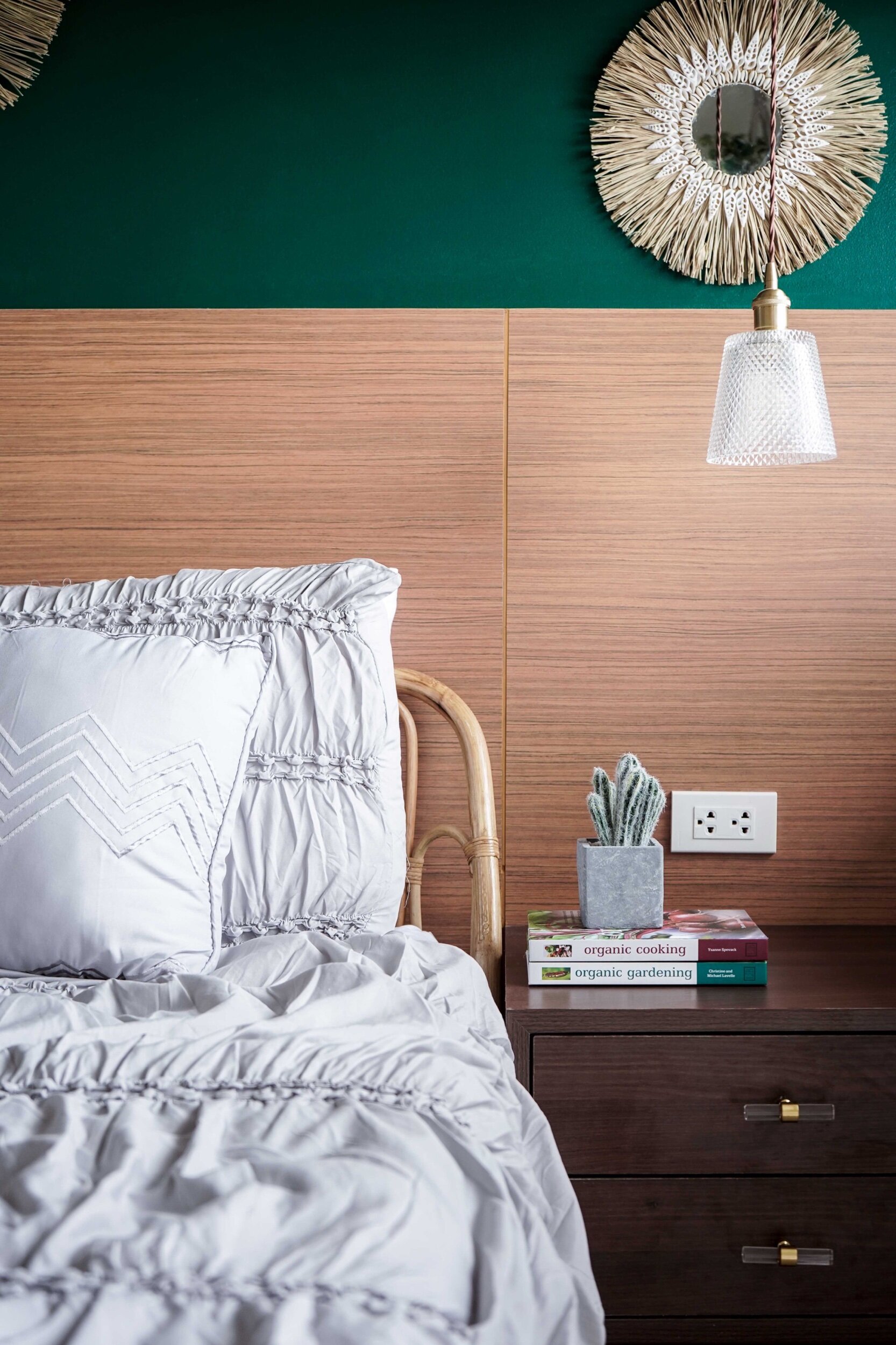Welcome to my blog! I'm excited to share tips, trends and news in the interior design market. Sign up for my newsletter for promos, freebies, and updates! ( See link BELOW).
I would like to know more about you. What are your struggles when designing your home or your business (for those savvy entrepreneurs)? Is there anything particular you would like to know more of? Are you having a hard time with deciding your style? Organizing your things? Let me know. E-mail me your troubles and let me help you take the fog off your eyes! :) Have a happy, happy week!!!
- November 2022 2
- October 2022 1
- September 2022 1
- August 2022 1
- June 2022 1
- May 2022 1
- April 2022 1
- February 2022 2
- January 2022 1
- December 2021 1
- October 2021 2
- September 2021 1
- August 2021 1
- July 2021 1
- June 2021 2
- May 2021 3
- April 2021 4
- March 2021 3
- February 2021 3
- January 2021 1
- May 2020 3
- November 2019 1
- June 2019 2
- May 2019 1
- April 2019 1
- March 2019 2
- August 2018 1
- June 2018 1
- May 2018 1
- April 2018 3
- March 2018 4
- February 2018 4
- January 2018 2
- December 2017 1
- November 2017 4
- October 2017 8
- September 2017 9
- August 2017 19
TESTIMONIALS
“It’s cool and light. Not too loud. Comfortable color (especially if you want people who come into your office to feel “chill”... shoutout to raging parents or intimidated students).”
“I will definitely recommend you to my friends. I’m also excited to see their reactions when they see the dining room.”
How To Add A Gallery Wall To Your Home’s Interiors
Gallery walls infuse your home with character and visual interest. Not to mention, art provides a great conversation point. If you are already collecting art, there’s a good chance you have already displayed these in a gallery wall in your home. However, there may be other oft-overlooked areas that you can further spruce up with art. On the other hand, if you’re getting started with curating your own art collection, now is a great time to begin mounting your pieces.
In this article, we give you easy tips for adding a gallery wall to your home’s interiors.
Use a unifying color palette or theme
If you don’t know where to start, consider employing a unifying theme to ground a vignette. In an article forThe New York Times, Lindsay Griffth, a prints and multiples specialist at iconic auction house, Christie’s advises: “You should look for ways to tie disparate pieces together, like through color or framing.”
For example, if you have a large painting that features warm oranges and yellow ochers, use this as acentral piece to anchor the gallery. From here, you can surround it with other artworks that echo the same palette. You may even add complementarypieces. For example, an azure painting will complement the orange and yellow. On the other hand, don’t overlook neutrals. When grouped together, a classic grouping of black and white photosare particularly stunning.
Choosing a unifying theme can also help ground a gallery wall. If you have a collection of bird paintings, combine these with other fauna-themed art. If you collect framed band posters, these can work togetherwith photos of the artist to communicate a cohesive story. You could even add colored prints that visually complement the posters.
Lastly, you may even use the frame as a unifying element. For example, you may combine pieces that feature the same type of frame and mat color.
Explore different ways to add a gallery wall
You can get as creative as you want when incorporating a gallery wall into your home’s interior design. You could go for symmetry with a series of same-sized artworks arranged in a grid, or a triptych of artworks that have been laid out linearly. A stairwell gallery featuring different sized pieces that follow the slope of the stairs is another popular way to display art.
If you want more flexibility, you can explore a shelf wall. Shelf walls give you an opportunity to change the artworks on display. Adding a shelf wall in children’s playrooms or home offices may also function as a mood board to fuel creativity in these spaces.
On the other hand, you ca mix things up using artwork with different sizes and frames. Also known as the Salon Style Wall, this type of gallery wall has its roots in the French Royal Academy during the 17th century, a time when salons were common locations for displaying art. Due to the sheer number of works produced by the Academy’s students, this resulted to “crowded” galleries.
This will of course require extra attention to detail and visual editing. Before you commit, trace your pieces on paper then tape these to your wall. Moreover, placing them on your floor beforehand allows you to edit, rearrange, add and subtract pieces as you see fit.
Need more inspiration? Check out these pinterestboards.
Incorporate other media
You need not feel obligated to use framed art exclusively. Gallery walls can become even more interesting when the addition of other tridimensional pieces. As with the previous tips, however, these need to be thoughtfully incorporated into the vignette.
Here are a few examples:
• For a nature-themed gallery situated above a console table, you can place potted plants, small sculptures, or books on the table to complement the art.
• A photo wall featuring your child’s photos and their framed drawings can be combined with a framed newborn outfit, playful decor such as a colorful dream catcher, or event giant wooden letters that spell out a name.
• Add a mirror to a gallery wall next to your entryway or even one inside a small space such as a guest bathroom.
• Framed prints and even pieces of fabric infuse texture, color, and pattern.
• Include ceramic plates to a grouping of art in the dining room or kitchen.
If you need help with drilling and mounting artwork, you are of course free to work with a professional. A pro can help ensure that artworks are level and spaces in between are properly measured out.
At the end of the day, your art collection and the vignettes you choose to display them in tell a unique story such as a personal narrative, stories about a specific place or time, or even a history lesson.
It is as much a personal expression as an expression of the stories that these pieces tell when they come together as a whole.
Need professional help with your home? Inquire with us at www.jasanchetainteriors.com
A Beginner’s Guide to Incorporating Art In Your Home’s Interior Design
If you have not thought of incorporating art into your home’s interior design, you are missing out on a great opportunity to customize your living space with pieces that truly speak to you. After all, art can be truly personal especially in its power to evoke emotion not only in the homeowner, but also in everyone who passes through the home.
And when your home features pieces that inspire, your space becomes even more inviting and uplifting. It can even encourage you to be more creative by crafting pieces of art yourself, one that is proven to improve mental well being.
Adding art to your home design is also a financially rewarding endeavor. That’s because it appreciates over time. Even becoming family heirlooms over time. Ian Hay, director for Saul Hay Galleries tells Homesand Gardens: “Art is rarely going to be a bad investment but often it can take years, if not generations, for art to go up significantly in value. Think that what you’re investing in is 30 years of enjoyment of the piece and buying something that you could pass down to your family.”
Finally, art provides an opportunity to support culture by patronizing artists, especially up-and-coming talents.
If this is your first time to consider artwork from your home, here are some easy tips to get you started!
Explore the art scene
First of all, there is no need to rush when it comes to starting your first art collection. Peruse the local art scene and immerse yourself in various styles and media.
Visiting museums and art galleries and speaking to the respective gallery owners; as well as participating in art shows and talking to the artists themselves is a good place to start. Nowadays, you can even do this online with museums offering virtual tours as a safer alternative amid the pandemic. You can also find inspiration in art blogs. You can also find inspiration closer to home. Perhaps you have family members and children who love to create art.
The goal is to get an initial feel of what is out there. Perhaps there was a sculpture or painting that stirred an emotion or engaged you visually, perhaps even intellectually. Were there color palettes that you particularly loved? For tridimensional pieces such as sculptures, were there particular shapes and textures that appealed to you. Take note of all these pieces that struck you.
Begin curating pieces
Again, there is no need to rush the process of collecting art. It pays to give careful thought to the pieces you acquire. Perhaps you are also thinking of particular rooms in your home where you would like to display a particular piece. That is okay too. However, make sure that the personal appeal of the piece aligns with the interior design of the space you want to display it in. For example, if you personally gravitate towards blues and discovered an abstract in a cool palette, you may consider this as a relaxing piece to have in a bedroom.
Furthermore, it is important to purchase from trusted sources. The Netflix documentary, Made You Look, explored an extreme case of fraud in fake art sales. No one deserves to be scammed in any purchase, art or otherwise. The key takeaway: with all investments that one makes, it pays to do due diligence.
You can do this by purchasing art for the artists themselves. You can also approach a reputable art gallery that will provide you with a certificate of authenticity.
Over time, you will build these relationships with artists, galleries, and curators. Your art preferences will also begin to take shape as you learn more. Again, art appreciation is a process, no different from our evolving appreciation of other art forms like film, literature, and music.
Highlight your home’s interior designwith art
The decision to place art pieces in its various spots is in itself not just a design decision, but a personal one. That said, here are further tips on how to thoughtfully incorporate art in different parts of your home.
Living and Dining Rooms. These spaces are often prioritized for displaying art as they are primary spots for social gatherings. A gallery wall therefore makes sense in you dining or living room interior. However you may also play with vignettes that combine both flat pieces and sculptures. Functional art, such as mirrors and furniture pieces can also anchor a space by providing visual interest.
Kitchen. The kitchen is often overlooked as a spot for displaying art. Consider the space above cabinets, open shelves, and of course, the walls. Just make sure to keep art safely away from areas where it can be exposed to water splashes and high heat. Apart from kitchens, bathrooms are another overlooked space. As with the kitchen, blank walls and shelves and even floor space can serve as spots for displaying art.
Bedrooms. As primary spaces for relaxation, it’s a good idea to choose artwork that will enhance that sense of calm. Again this is very personal. In terms of color, greens and blues are the most commonly associated with a sense of tranquility. But say, you love the steam-punk aesthetic, nothing should stop you from displaying a gritty, metal sculpture in your room. Or if your child loves the look of a psychedelic painting that calls to mind the drip technique of Jackson Pollock, then by all means regale the bedroom in colorful pieces.
Home offices and study rooms. As spots where we make a living, hold meetings, brainstorm, and study, art can inject creative inspiration into these room. If you’re an architect, perhaps you can curate a gallery wall of black and white photos featuring your favorite buildings. You could even frame and hang pieces made by family members to showcase their creativity—and boost your own creative juices.
Art breathes life into a space. They are points for conversation. They provide visual interest. And lastly, they can inspire and move us. In other words, art can contribute to a home you and your family will truly love!
Need professional help with your home? Inquire with us at www.jasanchetainteriors.com
2021 Design Trends
The past year has strongly influenced our approach to interior design across residential, commercial, and business spaces. 2020 witnessed many of these changes as we made shifts to new ways living, working, and playing.
As individuals started working from home and students began distance learning, there was a need to set up home offices and study nooks. Stay-at-home orders meant households had to get creative with keeping family members engaged, especially children and seniors who are strictly prohibited from venturing out. The global botanic boom saw a rise in plant enthusiasts—a function of a human need to nurture and commune with nature in a world in lock down
Businesses, especially those in the F&B industry, began incorporating safer design that encourages social distancing and outdoor dining. New safety standards were likewise employed in the back-of-house of these restaurants as a response to the urgent need for greater occupational safety among kitchen staff and employees.
As the world continues to recover from the pandemic and new hopes arise from the current rollout of vaccines, so will the spaces people thrive in and the design decisions they make. The way we plan, construct, lay out, decorate, and illuminate our spaces will also continue to be informed by the aesthetic and functional requirements of life in the new normal.
What can we expect in 2021? Here are some trends to look out for!
Modern interpretations of Nostalgic Interiors
With home dwellers continuing to spend more time at home, the benchmark of comfort continues to rise. According to Homes and Gardens, homey interiors with a nod to cottage and country-inspired interiors will make up some of the 2021 interior trends, thanks to the comfort and warmth that these evoke.
However, expect a modern interpretation of these classic styles. Cottagecore for example injects rustic elements into one’s home. Include pieces that are not just visually pleasing but comfortable and durable. Think plush sofas and chairs. You can also incorporate vintage or repurposed furniture and home decor into your space to cop that nostalgic feel.
Localize this trend by adding local textures, materials, and patterns to your home. Think capiz, natural stone, wood, and rattan. Keep it contemporary by combining these with modern design elements.
This trend is certainly departure from the modern industrial and minimalist that has cropped up in recent years.
Maximalism
Go big or go home may very well be one of 2021’s design mantras, but this has more to do with curating quality, statement pieces that speaks to your personal design personality. With work, play, and family life becoming increasingly centered around the home, a space filled with items that speak to you, serve your needs, and make you happy is more crucial than ever.
The design choices we will make in 2021 will continue to be informed by choosing furniture and decor that are visually stunning yet practical. How to incorporate thoughtful maximalism in your space?
· Consider investing in durable pieces that will stand up to increased activity in the home.
· If you live in a smaller home such as a studio unit, look for well-built multi-functional furniture.
· Incorporate a functional pièce de résistance in your space. For example, a statement shelf to serve as cluster storage for work and school books. A decorative chandelier also works by creating mood via light and providing visual interest.
· Invest in an art piece.
Yellow and grey color palette
Pantone named Ultimate Gray and Illuminating as the2021 colors of the year. The combination of a cool steely color and a sunshine-inspired hue is representative of strength and optimism amid challenging times. Incorporating this palette into your home also works well when combined with other colors. Pantone’s recommendations include:
· Adding vibrant peacock blues and greens for an aviary-inspired color story.
· Injecting soft pastels such as lilac, pink, and blue.
· Mixing in spicy, fall colors such as a rusty orange, magenta, and a green-golden nude.
Natural Elements
Architectural Digest notes a rise in the biomimicry of decorative items used in the home. These refer to pieces that emulate shapes and forms found in nature, but also designs that are eco-friendly. Biomimicry can be observed in architecture and industrial design. The Shanghai Natural History Museum is one notable example. Look for decorative items inspired by organic lines and patterns, from large pieces like a curving area rug to smaller items like dinnerware. Supporting Filipino-owned businesses that create sustainable items and products for the home is also a great place to start.
Secondly, as plants continue to trend, the option to grow your own vegetables and herbs is now possible with kits widely available across local e-commerce sites. Just check out these food towers, indoor herb gardens, and hydroponic systems.
And while Pantone declared grey and yellow as colors of the year, green will likewise trend this year in keeping with the rise in organic, nature-inspired design. It certainly helps as well that green evokes feelings of calm and wellness.
The Zoom-friendly space
With virtual meetings and social gatherings taking place more often, the need for what Vogue callszoom-friendly spaces has become a pandemic design essential. Carving out spaces that are conducive to work and study has become instrumental in creating work-life balance at home. This includes:
· Using natural light, task light, and ambient light to illuminate a space.
· Organizing office and study essentials.
· Incorporating calming elements such as indoor plants.
· Setting the scene for a visually-friendly “zoom background” by curating decorative pieces and removing eyesores like dirty laundry.
Design trends are dynamic and as 2021 progresses, our home’s interior design will continue to evolve with our evolving needs. These may be challenging times, but how we decorate and organize our spaces can contribute to helping us become happier, healthier, and more productive.
Whatever your design style, creating a home that is highly-personalized, comfortable, relaxing, and conducive to work and play will be key to a better quality of life in 2021.
Home Interior Design Tips for a Relaxing Space Amid the Pandemic
If you are among the countless individuals who have been working from home since 2020’s quarantine—and continue to do so—we understand how the lines between work and life may have begun to blur. For families with children undergoing distance learning these overlapping of boundaries have been further pronounced.
Home interior design can play a role in reinforcing these boundaries and helping you reclaim your space. In fact, it has measurable effects on well-being.
In addition to following expert tips on caring for your self and your family during the pandemic, here are ways to use thoughtful design to make your home conducive once again to relaxation.
Use the power of color
Colors are instrumental in creating mood. There is a reason why fast food restaurants are typically finished in warm colors like red and orange. They complement the dynamic energy of a space and more importantly, encourage appetite. For designated spots where study, work, and brainstorming takes place, try incorporating red, orange, or even yellow, which is associated with creativity.
Key spots for relaxation like your bedroom can benefit from greens and blues. Incorporate these into your bedroom design by:
· Using bed sheets and pillow cases in a cool palette.
· Adding an accent wall or choosing wallpaper in a refreshing flora and fauna print.
· Choosing a few accent pieces like a lampshade, a piece of artwork, or a statement chair done in green or blue.
Remember you do not need to do entire rooms in large swaths of color. Balance is key. Ground these colors in neutrals like black, charcoal, wheat, or ivory.
Achieve a sense of symmetry
Researchers have found that symmetry can affect feelings of positivity. Use balance to encourage feel-good vibes with these easy tweaks:
· Surround your sofa with a pair of matching chairs on either side.
· Create a gallery wall of artworks.
· Distribute elements in your room. Separate visually lighter pieces, say a side table, from heavier furniture like a bookshelf.
· Use sconces to flank a central piece like your bed frame or a bathroom mirror.
Incorporate indoor plants
Amid the pandemic, more and more people have begun tending to indoor plants. By virtue of their color, plants naturally encourage a sense of calm. Other than helping you feel good, plants can boost your productivity by 15 percent. This is great news if you work or study for home. Choose plants that are well-adapted to the indoors and does double duty by purifying the air in addition to making your space more visually refreshing. Here are some varieties to incorporate into your home’s interior design.
· Philodendrons
· Spider plants
· Rubber plants
· Bamboo palms
· Gerbera daisies
· Dragon tree
Make your indoor garden stand out by displaying plants in pots and shelves that complement your interiors. For example, if your home sports a Scandinavian aesthetic with a neutral palette, look for stands or racks done in unfinished wood or even brushed metal.
Choose the right lighting
Light, like color, can set the mood in your home. It also complements the functions of different spaces. Furthermore, by using light to define these spaces, you can create clear demarcations between areas you use for work and study and rest and relaxation.
For example, spaces where the household gathers to relax such as a media room, dining room, or living room benefit from ambient lighting. Some ways to achieve this is though cove lighting, valance lighting, or even upward facing lamps that wash walls and ceilings in soft light. Adding dimmers to your dining area also provides flexibility so you can shift the mood from say, Saturday morning breakfast with the kids to Sunday evening cocktail nights for the adults.
The bedroom is a particularly good candidate for ambient lighting at a recommended 2,000 to 4,000 lumens. If you like to read in bed, make sure to have a good bedside lamp that you can turn on as needed. In line with the tip on symmetry, having a pair of bedside lamps on either side achieves a nice visual balance.
Accent lighting may also be used in the living room, specifically to highlight the pièce de résistance, whether it’s a bookcase, artwork, or other statement piece. Track lights are one way to do this.
Finally, for your home office, it may seem practical to have direct lighting, but you might want to consider incorporating indirect lighting. Combine this with task light on study and work areas. As much as possible, try to position work desks close to sources of natural light. Natural light helps you focus better on your work, and more importantly, encourages feelings of happiness even as you are busy with tasks for office or school.
The pandemic may have made it challenging to balance work and personal life within the confines of our homes, but design can play a role in reclaiming our spaces.
By making tweaks to your home’s interior design, you can create a calm and peaceful abode that you can live, work, and relax in.
Need professional help with your home? Inquire with us at www.jasanchetainteriors.com
The How-tos of Pandemic-Friendly Restaurant Design
Food and Beverage has undoubtedly been one of the hardest-hit industries by the pandemic. In fact, a 2020 JobStreet report names F&B as the second most affected industry in terms of lay-offs and temporary unemployment. While most food businesses are not yet out of the woods, the upcoming vaccine rollout promise to reinforce economic recovery. Meanwhile, restaurateurs continue to pivot their businesses to accommodate the new normal.
The approach to safer restaurant design has been vital part of that shift. In 2020, Architectural Digest reported on the changing state of restaurant operations from requiring social distancing to occupying previously unused outdoor dining spaces---changes that we have seen ourselves here in the Philippines.
If you are a new food business owner or making amends to your current premises, you can comply with basic safety guidelines without sacrificing aesthetic value. The following design tips demonstrate how you can achieve this i your restaurant’s interior design!
Embrace Al Fresco Dining
Prior to the pandemic, outdoor dining has been a come-on for diners. A more visceral experience by way of an outdoor view and greater comfort especially where cooler weather is concerned all attract customers to a space. Amid the current situation, this has proven to be safer for customers. Restaurants at Rockwell communities, for instance, started a weekends-only streetside dining initiative for its restaurants.
From an operations perspective, access to a great outdoor space means you can spend less on decorating, and allocate more to investing in quality furniture that can stand up to the elements. This includes rain, strong winds, and direct sunlight that could result to mold, mildew, and cracking.
When choosing resilient materials for your al fresco area, consider the following:
• Teak. A high oil content makes this wood particularly hardy.
• White Oak. Capable of resisting water.
• Treated wrought iron. Wrought iron can withstand strong winds and is strong enough to last you decades.
• Stainless steel. Stands up to extreme heat. Powdered coating makes stainless steel even more durable.
If you have ample outdoor space, maximize this for a refreshing al fresco experience that will also be safer for your customers.
Need more inspiration? Check out the outdoor seating at these fine-dining establishments in and around Metro Manila.
Use Interior Design to Create Energy
In an interview with Sunset, LEED-certified architect Alexis Readinger talks about the loss of the “dynamic energy” that characterizes the restaurant experience. This energy usually originates from the diners themselves, kitchen staff, as well as the chefs.
With restaurants operating at lower capacity, Readinger advises the use of design elements to highlight the dining table as key spots within the restaurant space. “That could look like hanging art over each table, or pools of colored light, anything to specialize the dining experience at the table,” Readinger says.
Other ways to elevate the dining area?
• Incorporate interior design elements that take a cue from your surrounding environment.
• Display collections prominently such as a photo gallery or a concentration of wine bottles.
• Refresh the space with thoughtfully placed greenery.
• Use statement pieces such as a stunning chandelier or decorative mirror.
New Normal Kitchen Interiors
Finally, the operations aspect of your business cannot be overlooked. Safety of staff and customers in the front of house is just as vital as the safety of your employees in the back of house. The pandemic has necessitated changes to the way kitchen elements are laid out for better risk mitigation.
This masterclass overview list guidelines by culinary consulting firm, William Caruso and Partners. Some of these principles include having clear demarcations (walls) between areas for soiled (dishwashing, laundry), and defined areas for dry and refrigerated food storage.
Work with a reputable Operational Health and Safety Expert using science-backed principles to better plan your restaurant layout from front door to back door.
Marrying design and practicality is more crucial than ever for delivering a customer experience that aligns with your restaurant’s brand but also addresses the safety of all. As always, follow your LGU’s guidelines for restaurant operations, as well as the CDC’s guidelines for restaurant and bar operators.
Need professional help with your home? Inquire with us at www.jasanchetainteriors.com
How To Spruce Up Your Home Design On a Budget
The pandemic has certainly affected many aspects of our lives—and that extends to our relationship with our personal spaces. Our homes have dramatically shifted as remote workand distance learning became the norm. As a result, we started incorporating offices and study nooks into our home’s interior design. A New York Times article cites an increase in requests for multi-functional spaces and products that address pandemic needs. This includes incorporating well-ventilated sun rooms, mud rooms to isolate in, and even task lighting into one’s home design.
During quarantine, limitations on movement meant families had to get more creative with time spent at home, from entertaining one’s kids to working out. In fact, the year 2020 saw the rise of plantitas and plantitos. The Philippine Daily Inquirer referred to trends such as this part of a greater “stay-sane-at-home” movement.
New Normal Home Design
The pandemic has challenged the boundaries between work and life. And that is where interior design can help turn your home into a space that is as comfortable, inviting, and above all, functional amid these challenging times. But remember: you don’t need to spend a lot on re-modelling. Our tips show you how you can make simple tweaks to your home even on a budget!
#1 Work with what you have
Assess your existing furniture pieces and decorative items. You can:
• Create a color palette and group together items to create a vignette.
• Frame and mount your own artworks—or even those made by your kids. Another option is to check out downloadable digital prints on Etsy.
• Move furniture around. Try using an app like Room Planner.
• Find new uses for existing furniture like turning an ottoman into a coffee table, or turning a stool into a side table, or a pedestal for holding books.
If you do plan on adding new pieces to your home’s interior design, consider the pandemic a good opportunity to support local home design businesses.
#2 Style your work and study spaces
Your family’s books and work files can easily contribute to clutter. But when styled thoughtfully, your shelves can look inviting, and even encourage productivity and learning! Some ideas to try:
• Incorporate home decor items into your shelves including vases, framed artwork, plants, and even your kids’ toys!
• Categorize books according to color.
• Add organic elements. As plantitas and plantitos have demonstrated, plants do a great job of refreshing a space. Some plants, such as philodendrons and chrysanthemum, can even purify indoor air.
• Mix things up by stacking books vertically and horizontally.
Need more inspiration? Check out these Pinterest boards.
# 3 Do a DIY Home Decor Project
If you have time and space—and a few cans of paint and primer—you can refresh existing pieces in your own backyard. On the other hand, you can get younger family members involved in fun and easy-to-do projects. Here are a few ideas to consider.
• Paint an entire furniture piece.
• Dip-dye wooden dining chairs.
• Add color to glass jars.
• Change the pulls and handles on kitchen drawers and cabinets.
• Choose from a variety of colorful craft projects to keep kids entertained.
Looking for more DIY ideas? You can find a vast array of project tutorials on YouTube.
The pandemic has been tough on individuals and families. But it also underscored the value of our homes as a center for work, study, and family life. Whether you make small tweaks, change up the order of your furniture, or DIY your own project, you can create a home you love whatever your budget!
Need professional help with your home? Inquire with us at www.jasanchetainteriors.com






